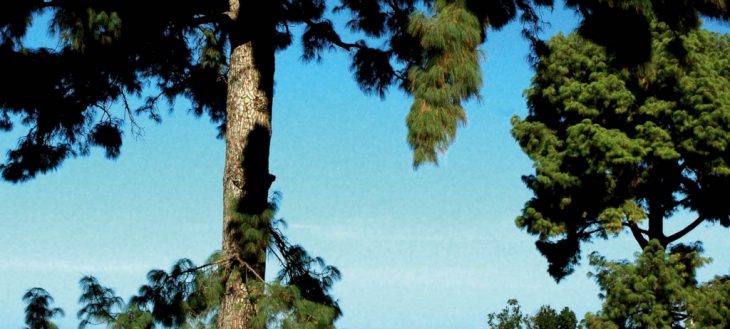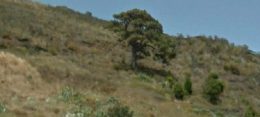Pinus canariensis, or Canary Island pine is a coniferous tree endemic of the Canary Islands.
The adult tree can grow up to 40 metres high, its trunk becoming 2,5 metres in diameter.
However, they usually are between 15 and 25 metres high and 1 metre in diameter. The
largest specimens known are up to 60 metres high.
Its trunk is light grey but becomes darker and reddish as it ages, also quickly becoming
thicker and forming cracks. During the first years it grows rapidly, forming horizontal
branches with plenty of upright twigs, giving the tree a pyramidal shape. Later, when vertical
growth slows, it adopts a more parasol-like shape.
Typical for all pines, two types of leaves can be found on the Canary Island pine: The primary
or juvenile leaves that have a triangular cross section, are grey-blue in colour and finely
serrated which is why they feel rough to the touch, and the adult leaves that grow in groups of
three, are grass-green, thing and very flexible, about 20 to 30 centimetres long and 1
millimetre thick.
It is characteristic of the species to retain the juvenile forms of leaf for a long time, as well as
their apparition in regrowth from the trunk or thick branches (epicormic shoots).
They flower from March to May.
Another important characteristic is their fire resistance, which is due to the thick bark
isolating the tree from the heat of fires.





